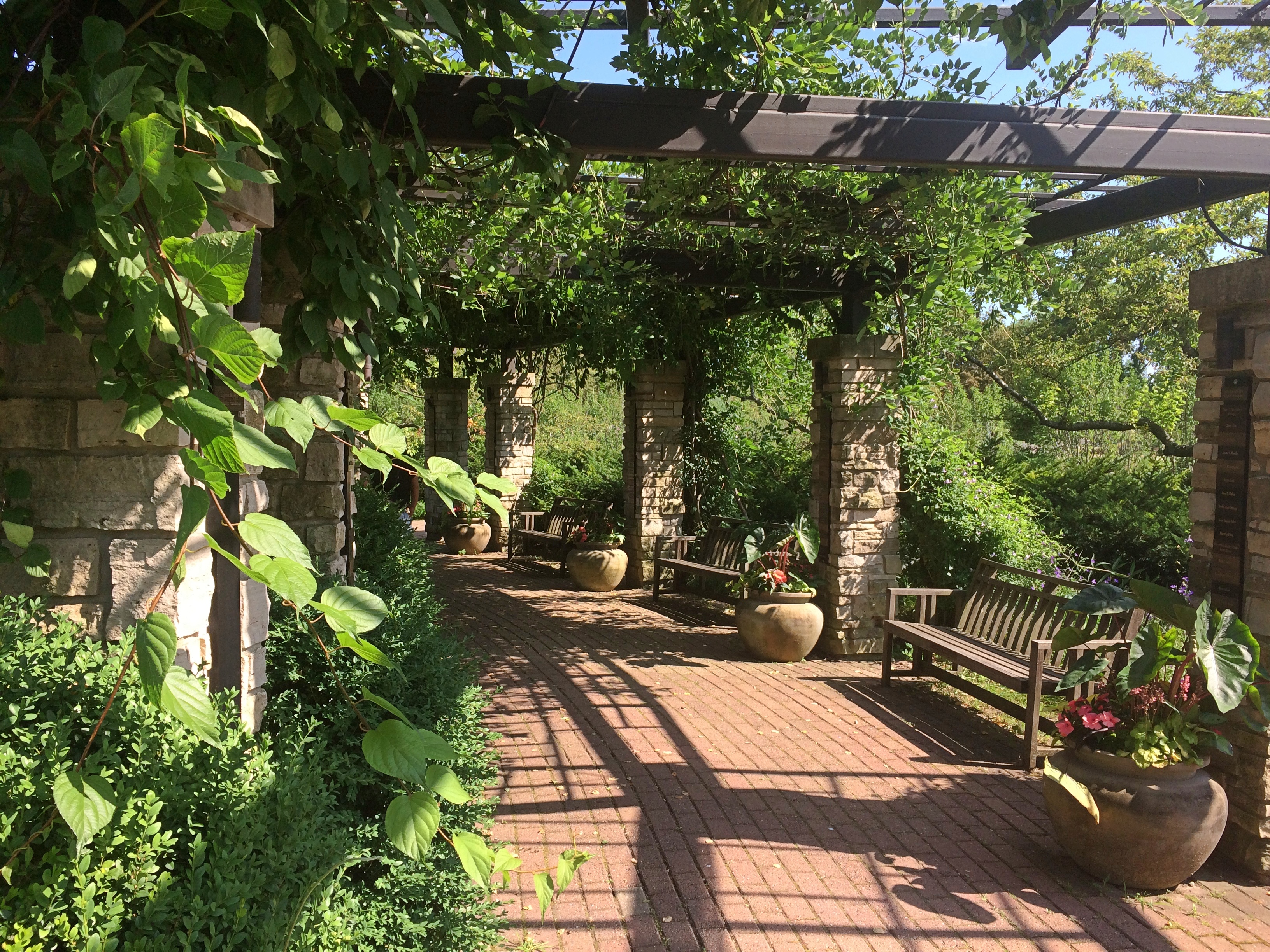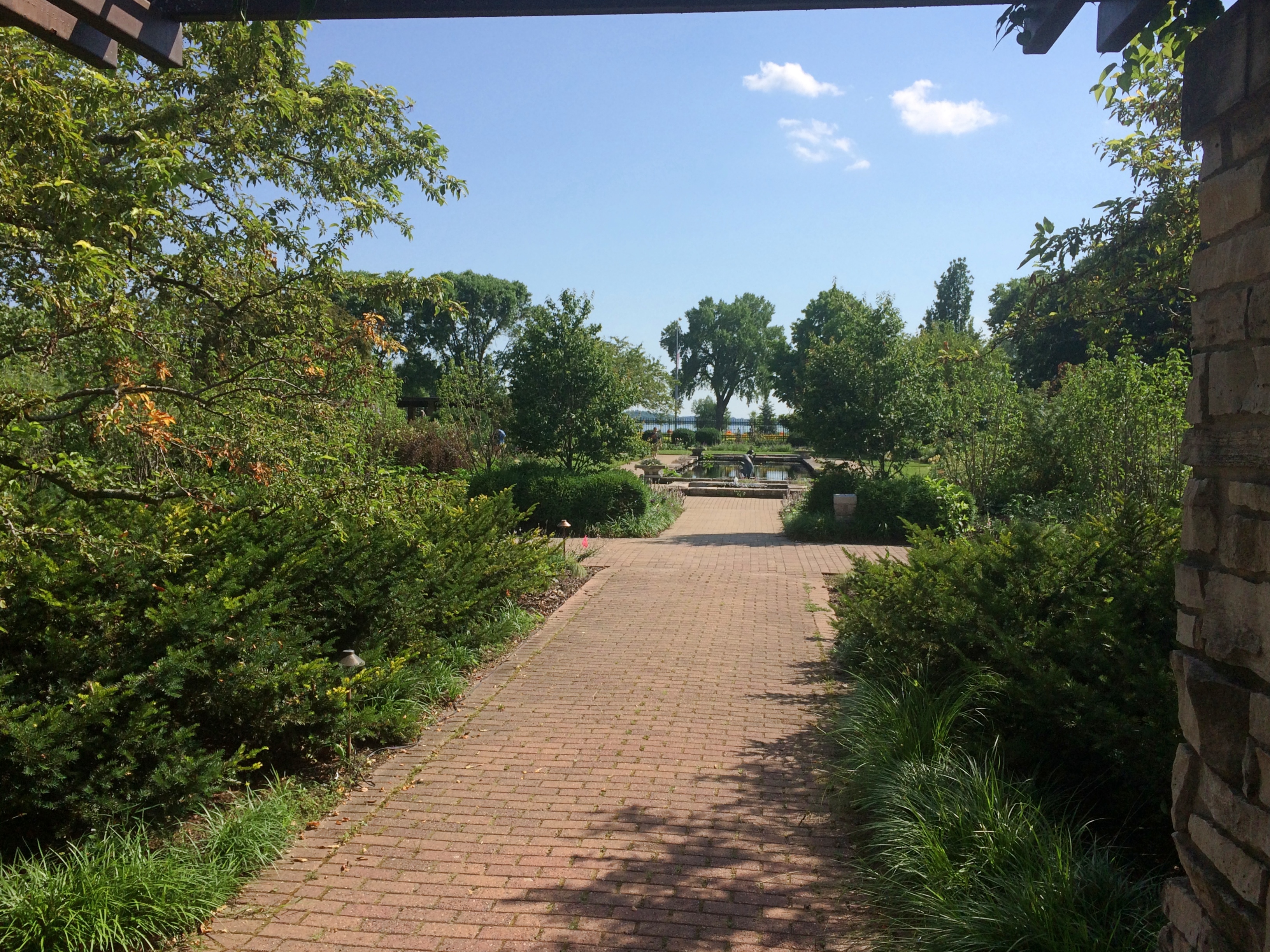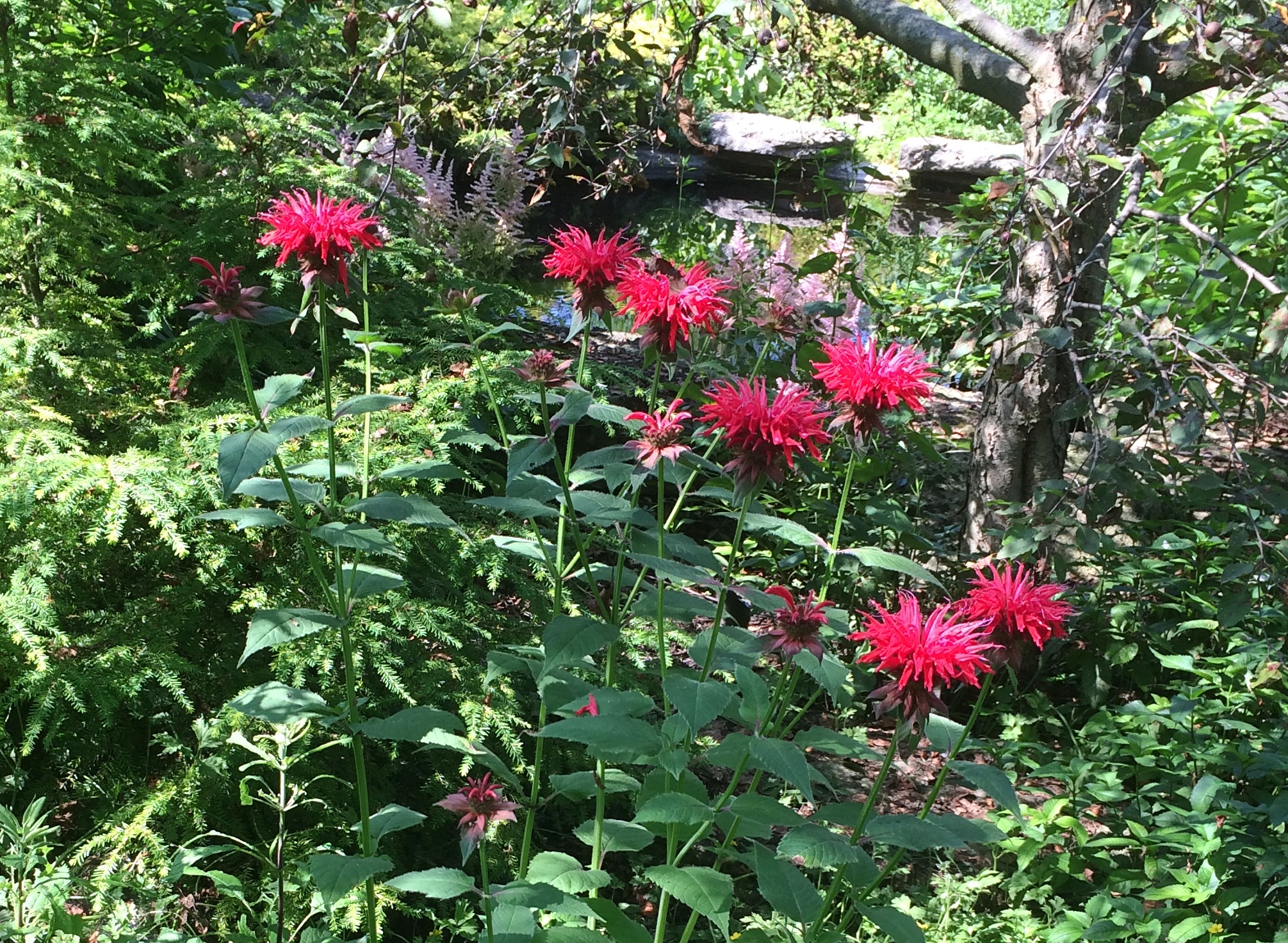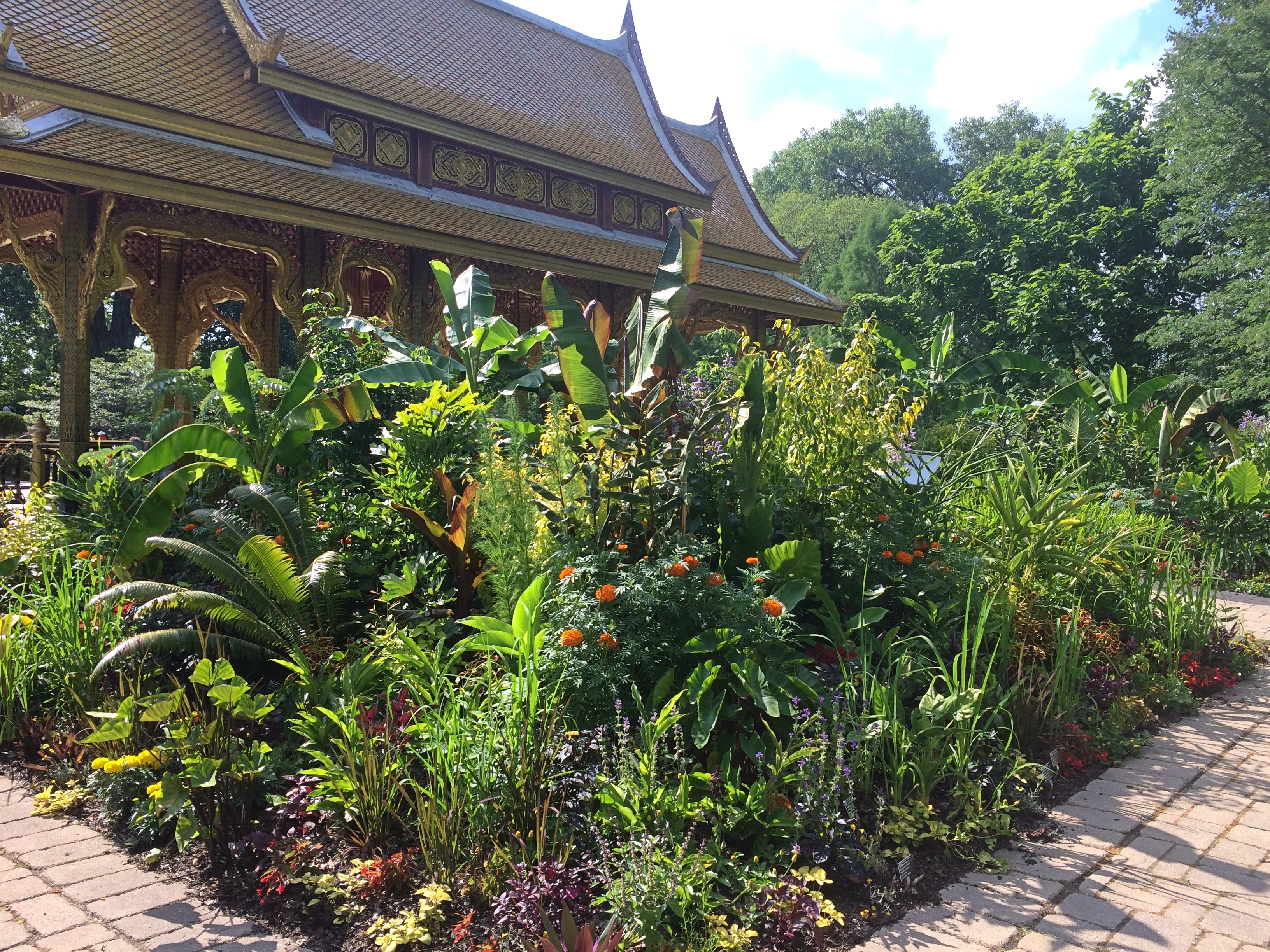High heat over the weekend, but come this morning, pleasant upper 70s F. Heat returns later in the week, I hear. That’s a northern summer for you.
On the way back from Prairie du Chien last week, we stopped briefly in Madison. Good old Madison — been going there since the late ’80s, and I think of it as the Austin of the North. Yet I don’t know it all that well.
This time we visited Olbrich Botanical Gardens, another spot in Madison I’d never seen. These days, its indoor components, especially the tropical conservatory, are closed. But the lush outdoor gardens are open to walk around for no admission.
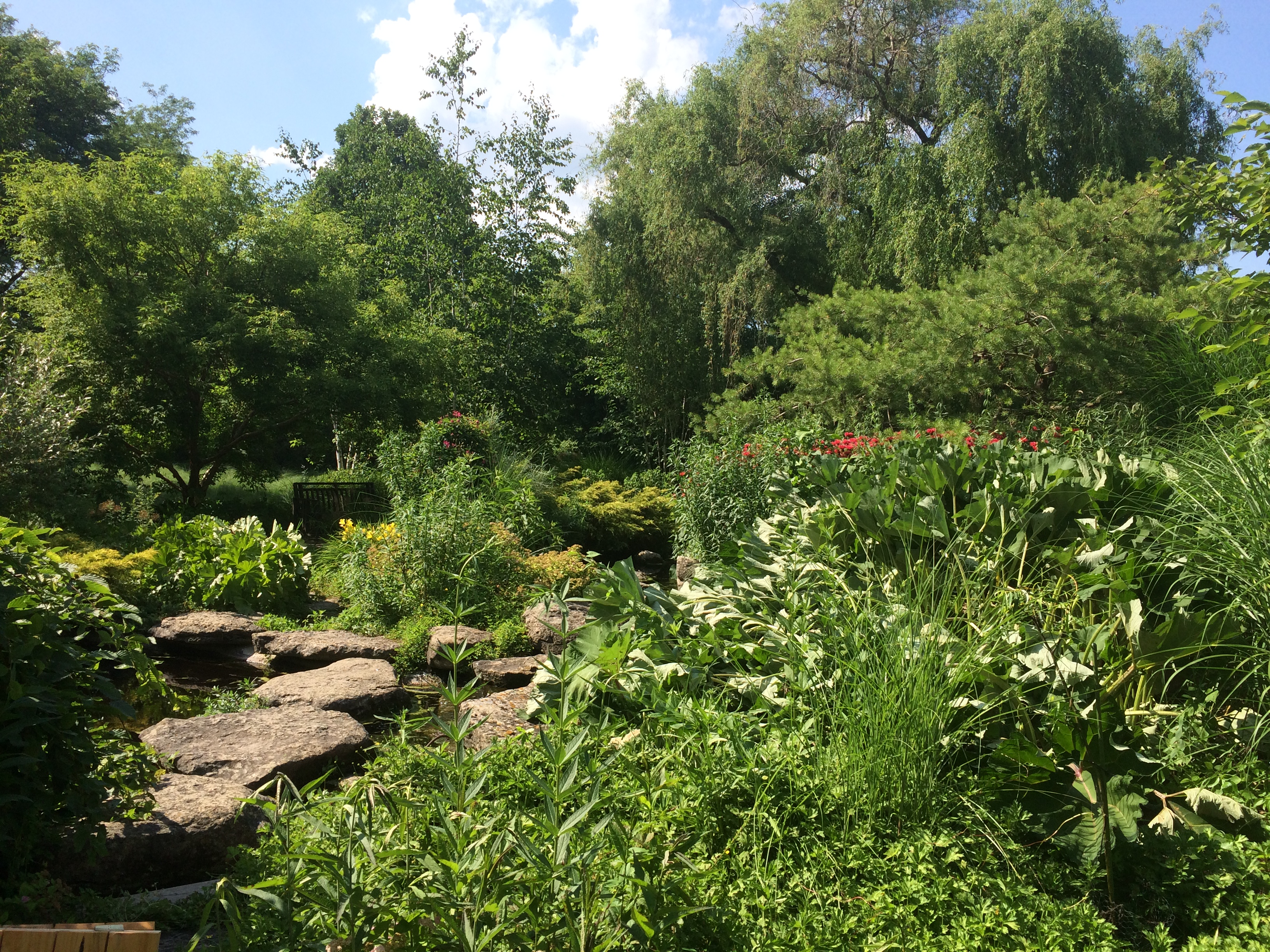
Like most botanic gardens, there were signs. But not that many, and mostly I didn’t bother with plant names. It was too hot to concentrate on that anyway.
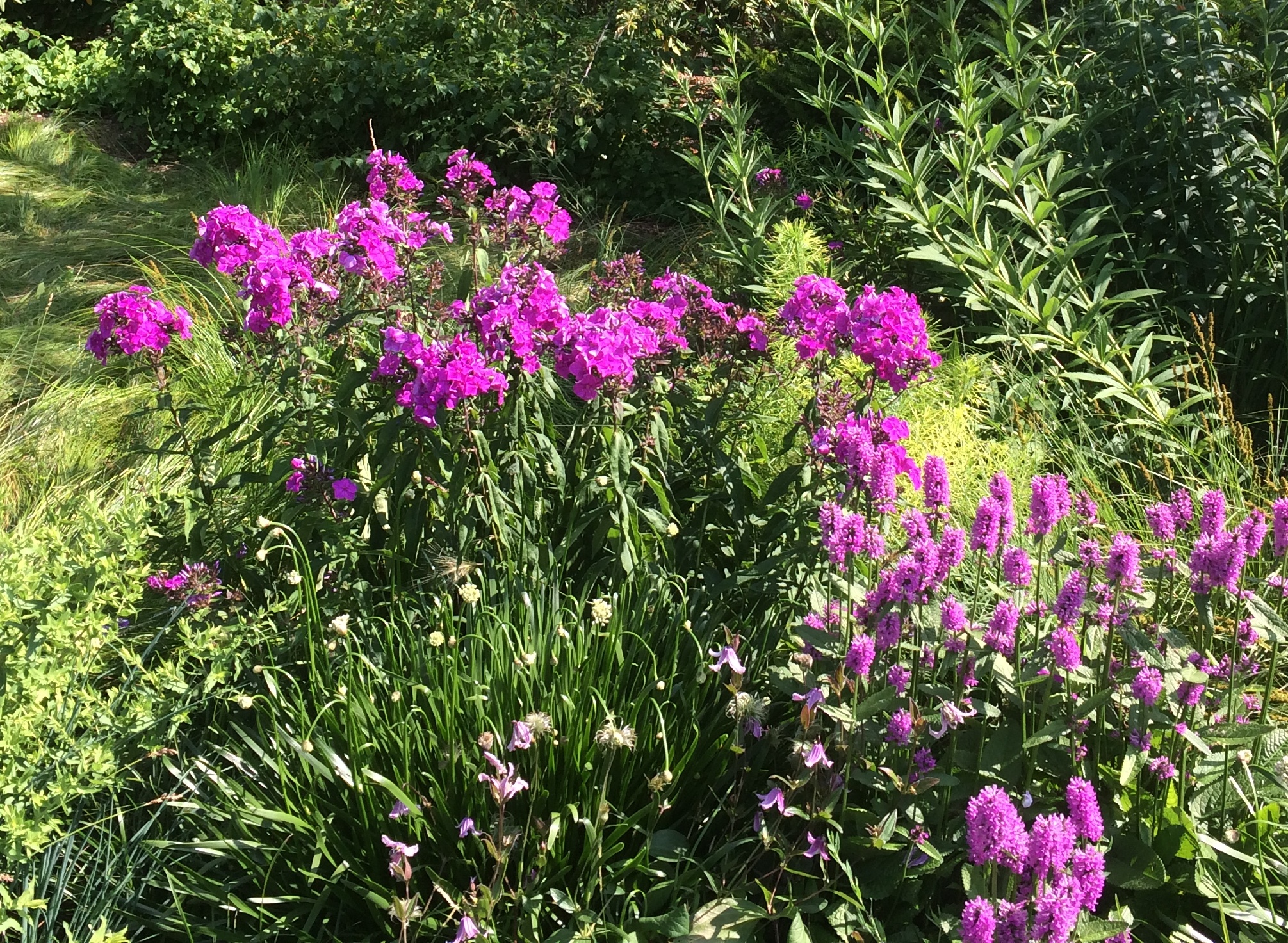
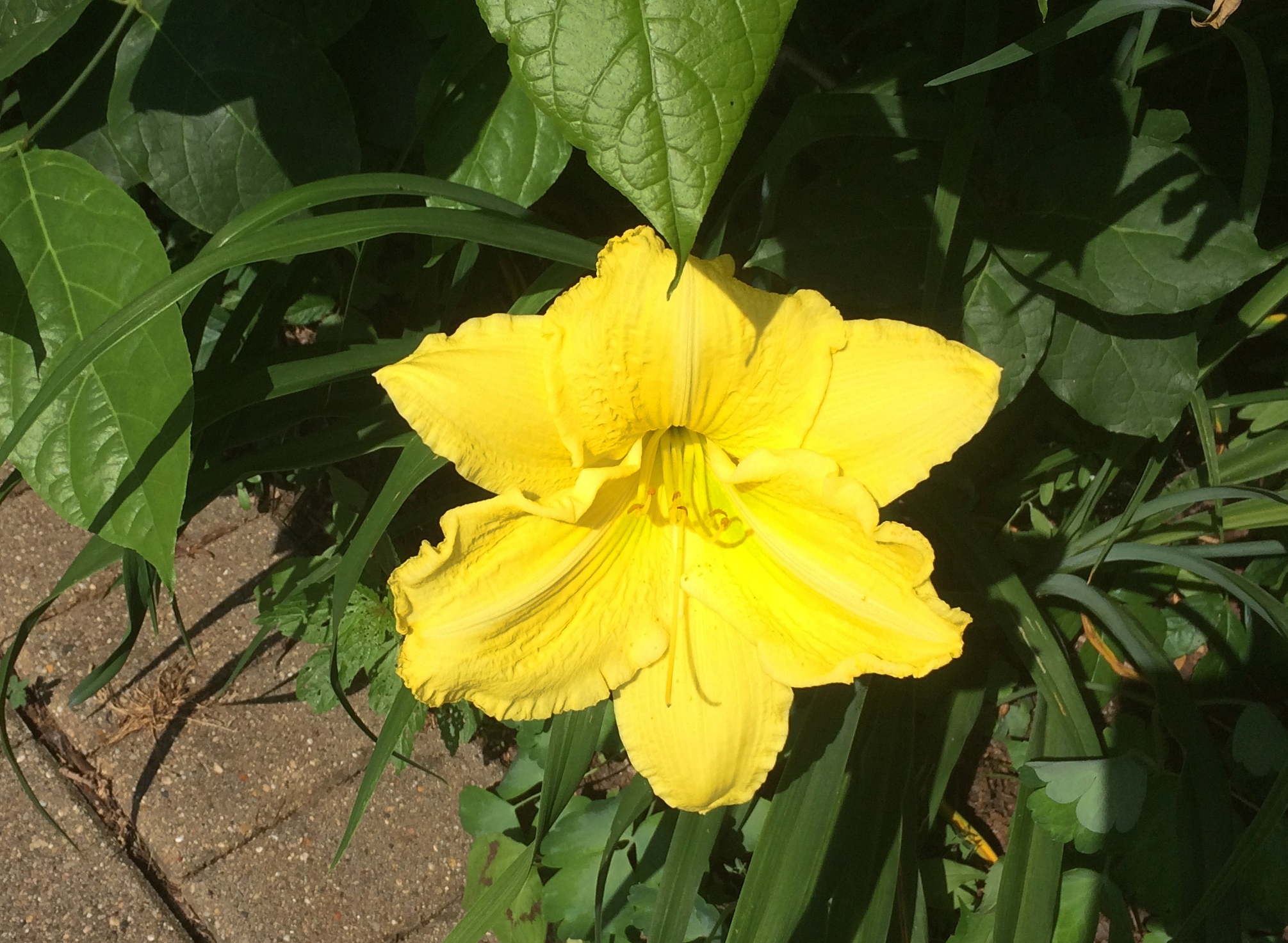
I hadn’t done much preparation for the visit, so I was pleasantly surprised when we crossed a water feature — Starkweather Creek, which flows into Lake Monona —
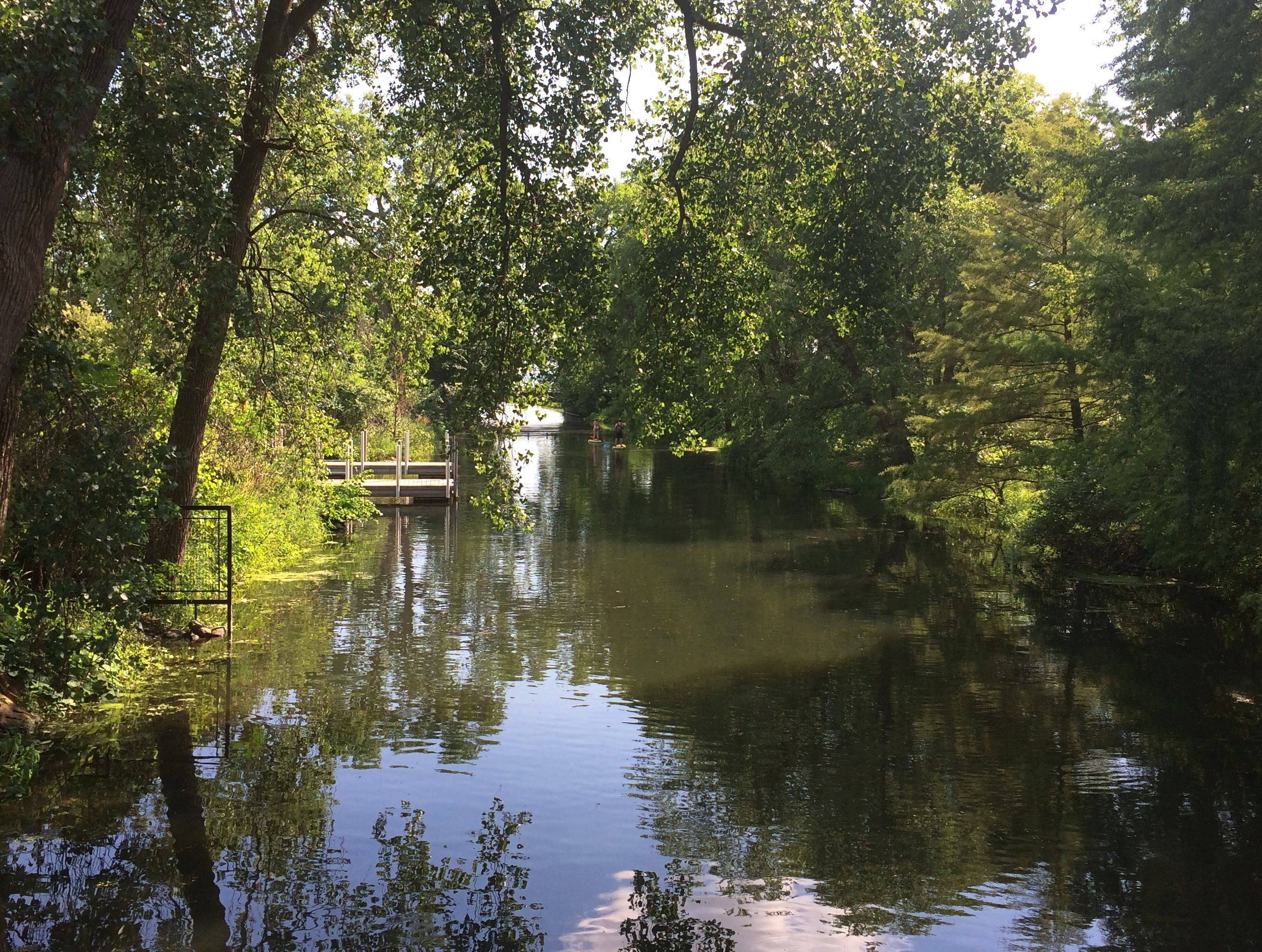
— and passed by some curious sculpture —
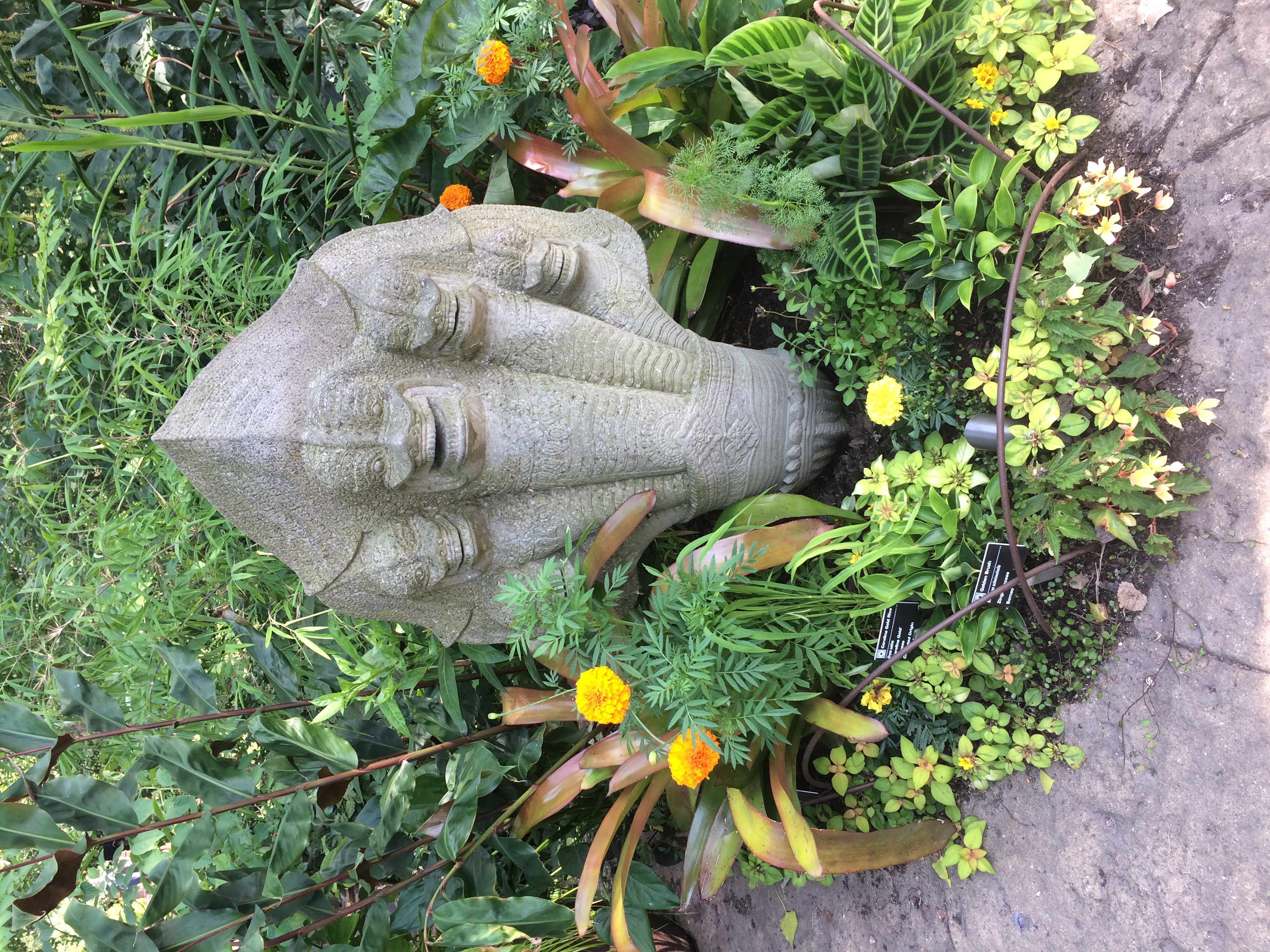
— and came to the Thai Pavilion and Garden.


“A pavilion, or sala, is a common structure in Thailand generally used as a shelter from rain and heat. Olbrich’s pavilion is more ornate than most roadside salas in Thailand and represents those found at a temple or on a palace grounds,” the garden web site says. “However, Olbrich’s pavilion is not a religious structure.
“The pavilion was a gift to the University of Wisconsin-Madison from the Thai Government and the Thai Chapter of the Wisconsin Alumni Association. UW-Madison has one of the largest Thai student populations of any U.S. college or university.”
I’d have never guessed that last fact. As I stood gawking at the thing, sun beating down on me, I felt just an inkling of being in Thailand again, near one of its impressive shiny structures, whose glint always seemed to accentuate the heat.
“The pavilion was built in Thailand, then disassembled and packed in shipping crates,” the garden continues. “The pavilion traveled seven weeks by sea, then by rail to Chicago, and to Madison by truck. Nine Thai artisans traveled to Madison to reassemble the pavilion after building it in Thailand. It took three weeks to reconstruct [in 2001].
“Amazingly, the pavilion is able to withstand the winter weather of Wisconsin with no protection because it is constructed of plantation-grown teak and weather-resistant ceramic roof tiles. The gold leaf, however, is delicate and not able to withstand the oils of the human hand.”
A pavilion and a garden, as the name says.
Remarkable simulation of tropical lushness, there in the distinctly non-tropical Wisconsin.
